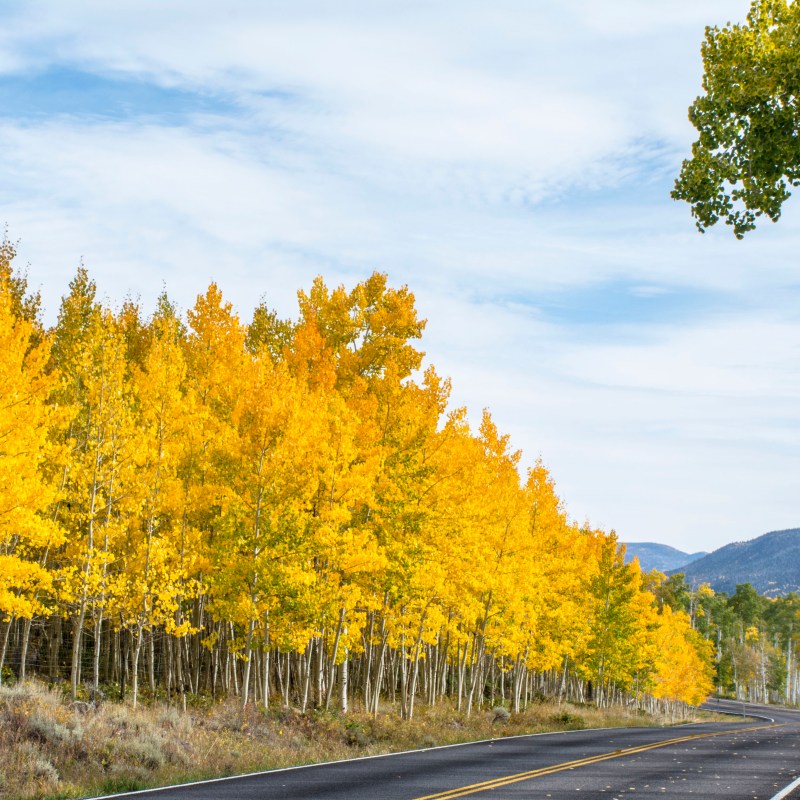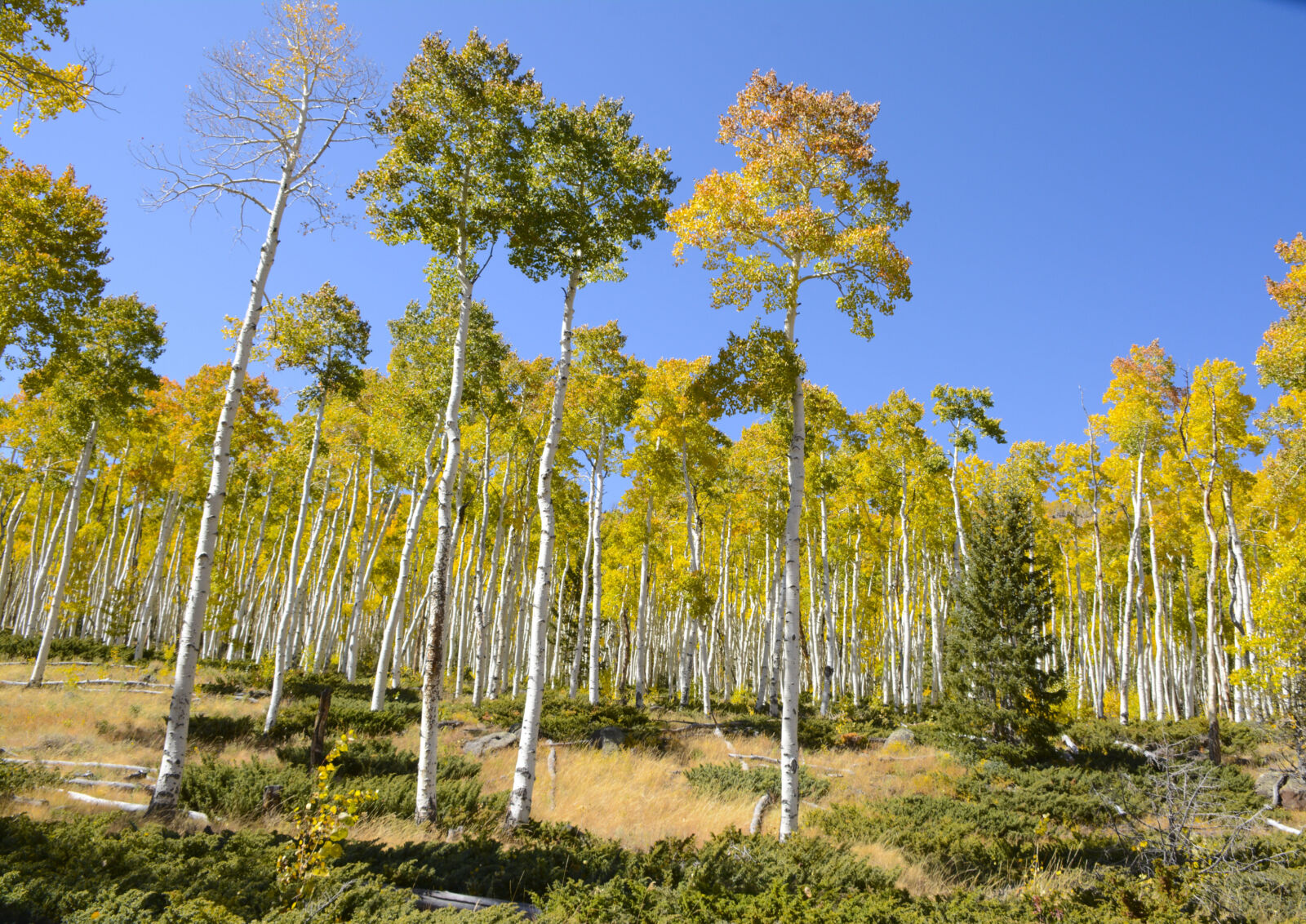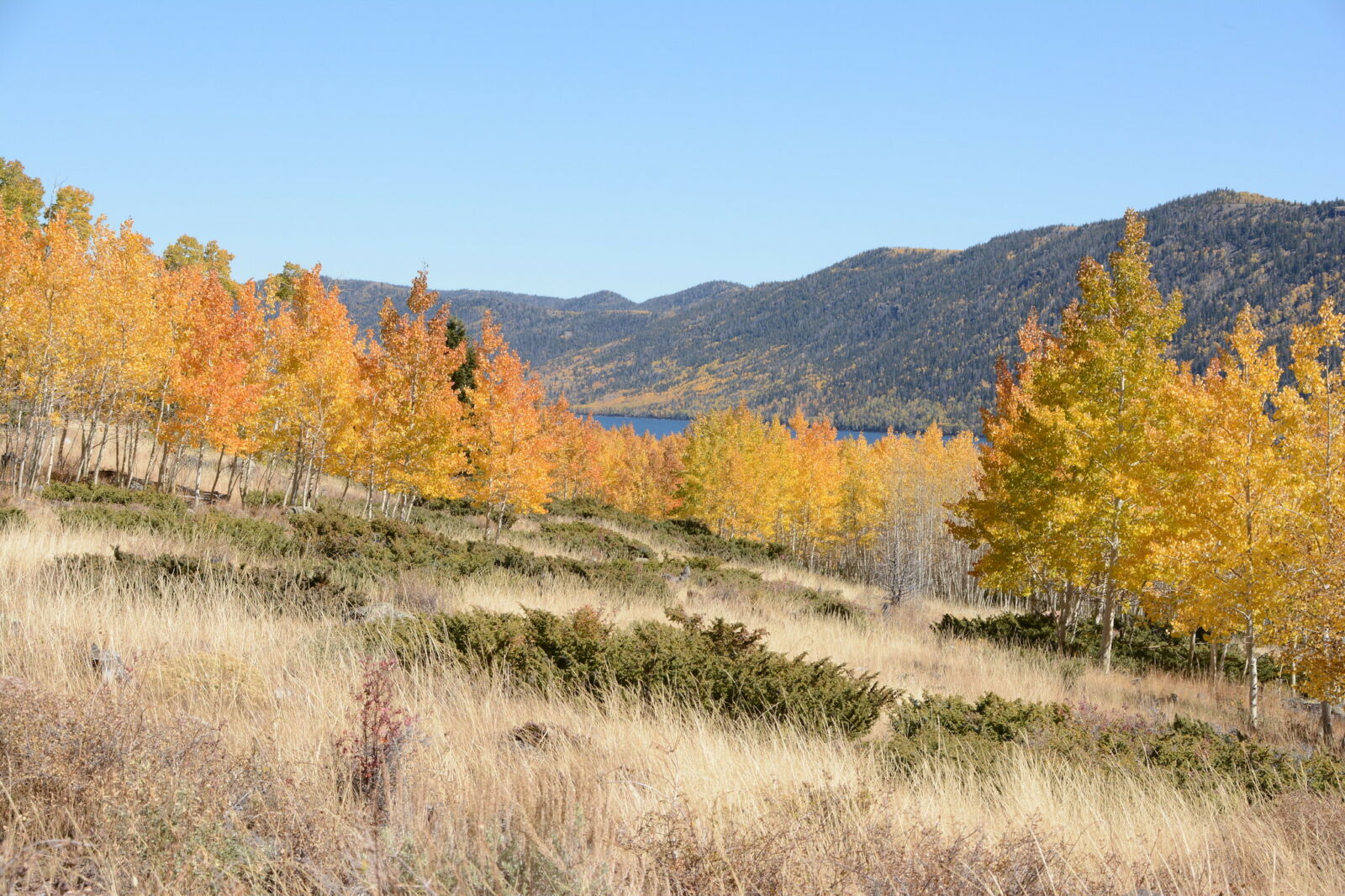
Americans are spoiled by nature.
Videos by TravelAwaits
Our ecosystems are old, if not ancient. Want the proof? Eight out of ten of the world’s oldest trees are located in the US.
Some of our cypresses, bristlecones, junipers, and sequoias date back to the 5th century BCE. The oldest—a bristlecone named Methuselah that’s native to California—first germinated in 2,832 BCE.
For context, Egyptians had just invented papyrus at the time Methuselah was growing its first bristles.
There was no Machu Picchu. No Great Pyramid of Giza. No Great Wall of China.
Like other trees aged thousands of years, Methuselah is a prominent reminder of nature’s great power.
But what if I told you that the US is home to another tree that’s at least three times older than Methuselah? Welcome to Pando, a quaking aspen tree native to Utah.
Conservative estimates say that Pando might be 9,000 years old. Other estimates round all the way up to 14,000 years.
Either way, it’s kind of a big deal, even if most Americans have never heard of Pando. Here’s your crash course on Pando, along with how to visit this great tree at Fishlake National Forest in Utah.
What is Pando?
As mentioned above, Pando is a quaking aspen—an iconic and lovely species found throughout Utah.
But Pando isn’t a single tree, which is why it isn’t listed alongside giants like Methuselah when ranked for age. Pando is a clonal male organism—which is a fun way to say that this tree continues to duplicate itself with new growth called ramets.
This single Aspen tree has cloned itself for thousands of years. It now covers an area of around 108 acres in Utah’s Fishlake National Forest.
Using an extensive network of underground roots, Pando shares nutrients to spur energy production and store vital resources. This root system has helped protect Pando against countless threats over the years.
That means that not only is the US home to the world’s oldest tree, but it’s also home to the largest—at least in terms of weight and land mass. Pando has cloned itself around 47,000 times and weighs around 6,000 tonnes.

Pando the clonal giant
So, why isn’t Pando celebrated for its age and size?
As outlined above, you won’t see Pando mentioned on lists of the oldest or largest trees because it’s considered a clone—not a single tree.
I think that’s a little silly considering Pando’s original seed would have germinated long before the start of human history, even by conservative estimates.
If you want to fully nerd out on Pando topics, explore the Friends of Pando website. If you want to learn even more about the world of clonal trees, explore Australia’s clonal giants—some scientists believe they’re older than Pando.
How to visit Pando
Over the last ten years, dozens of organizations have sought to protect, showcase, and demystify Pando to the general American public.
It’s easier than ever to visit and learn about Pando. The National Forest Foundation has a pretty great guide, for example, along with the Forest Service.
There are dozens of ways to explore and enjoy Fishlake, from ATVing to hiking to camping. You can easily download the map of the grounds from the Forest Service (linked above) to start exploring the park—and experiencing the magic of Pando.
Given its proximity to other hotspots like the Grand Canyon, Bryce Canyon, and Zion National Park, you can bundle a visit to Pando in with other outdoors trips.

Where should you stay to explore Pando?
The closest big city to Fishlake National Forest is Salt Lake City, Utah and Provo. However, if you’re going to be exploring the Grand Canyon, Bryce Canyon, or Zion National Park, you can bundle in a visit to Fishlake pretty easily.
Fishlake National Forest is also accessible from Las Vegas. The drive from Salt Lake City takes around three and a half hours. A drive from Las Vegas, by contrast, takes around four and a half hours.
- Book a stay in Salt Lake City
- Book a stay around the Grand Canyon or look through my top picks
- Book a stay around Bryce Canyon or look through my top picks
